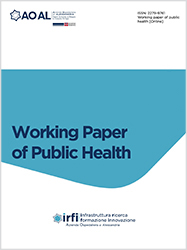Andrological prevention in young people
Accepted: 11 July 2016
All claims expressed in this article are solely those of the authors and do not necessarily represent those of their affiliated organizations, or those of the publisher, the editors and the reviewers. Any product that may be evaluated in this article or claim that may be made by its manufacturer is not guaranteed or endorsed by the publisher.
Objectives: In Western countries we are faced with a progressive reduction in the birth rate and deterioration of seminal quality. The pathologies of the reproductive sphere are therefore assuming a social relevance also due to the strong economic impact of the current assisted reproduction techniques. The need to deal with prevention in the field of male health stems from the observation that the andrologist often has to intervene in situations compromised by late diagnosis and a lack of educational and preventive intervention. It is therefore necessary to raise the awareness of young people and families, also through the involvement of school structures, with regard to juvenile andrological diseases. Methodology: Since 2010, we have developed an andrological prevention/diagnosis project in the province of Alessandria called PASS, aimed at young people aged between 17 and 19. This programme is divided into an informative part of a scientific-disclosing character, and another that provides for an andrological examination. Results: In about 5 years we met 4239 students, of which 2087 were males, 947 of these performed the andrological examination. Conclusions: We believe that it is desirable that andrological programmes of this kind should become a structured reality.
PAGEPress has chosen to apply the Creative Commons Attribution NonCommercial 4.0 International License (CC BY-NC 4.0) to all manuscripts to be published.

 https://doi.org/10.4081/wpph.2015.6706
https://doi.org/10.4081/wpph.2015.6706




